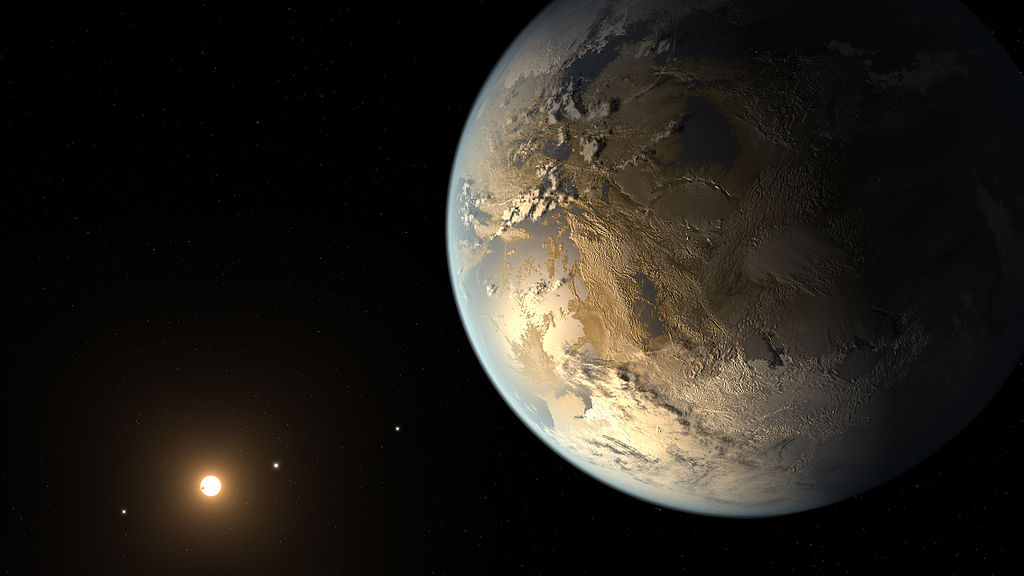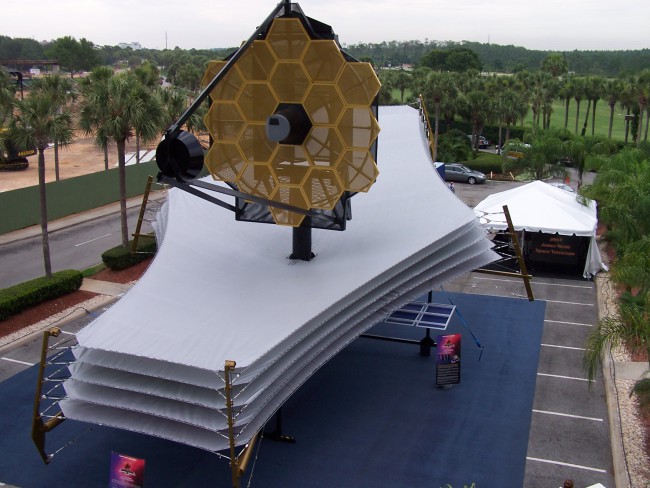
Despite the fact that the construction of the high-tech space telescope JWST (James Webb Space Telescope) is still underway, and its launch is planned only in 2018, it does not prevent astronomers to start thinking about the next project — a 12-meter space telescope that will search for evidence of extraterrestrial life.
At the meeting of the American astronomical society, the representatives of the Association of universities for astronomy research (AURA) shared their thoughts and hopes regarding the next flagship space Observatory, which will have to replace the JWST telescope a decade after his work.
The aim of this future mission, which would begin no earlier than 2030, will continue to be in search of answers to two fundamental questions: are we alone in the Universe or and like building elements and materials of our Universe were developed in the process of its evolution?
The problem seems to be clear and obvious, but to achieve it we need a spacecraft with such technologies, which previously mankind had never seen. We need a telescope at least 10 times more powerful than Hubble. We need, as a joke astronomers, “Hubble HD”.
“The road to the discovery of the worlds of the living requires the use of a space telescope with a radius of at least 8-12 meters,” says Natalie Batal, an astronomer who studies extrasolar planets at the Space center Ames space Agency NASA.
“We need a thing that will be able to discern the tiniest details of sun-like stars within 30 parsecs,” adds Batal, explaining that 30 parsecs is equal to approximately 100 light years.
“Such a telescope will enable us to study earth-like planets located in the habitable zone of its sun-like stars”.
If somewhere there is life and if we can find sufficient number of suitable possible candidates among these planets, then we will have a fairly good chance that this life we still find.
However delivery of 8 to 12-meter telescope in space will be an extremely difficult task. For example, the telescope named the James Webb worth $ 8.7 billion and the size of a tennis court, which will allow astronomers to see the first light of the beginning of time, has a diameter of a primary mirror 6.5 meters. However, compared with the new telescope, whose construction will not begin before 2030, JWST will look like a toy.

Model of a space telescope named James Webb. Scale 1:1
Yet increasing the size of the search equipment is exactly what we need if we want to catch the light coming from distant worlds. Using the method of transit photometry, we were able to detect thousands of exoplanets, but it is impossible to name even a small part of what awaits us in the future. Almost all the planets we’ve “seen”, are just bright balls of gas that worlds larger than Jupiter and likely uninhabited.
“Even with the most modern current technology we can not not what to find, and even present an analogue of the Solar system,” says Batal.
“But that is what we would like. So have to go”.
In order to be able to detect a small, rocky planet in the habitable zone of bright stars G-type (similar to our Sun) and to study its atmosphere for signs of life, we will need a telescope with an incredible aperture. The telescope is able to suppress starlight in the ratio of ten billion. And he, of course, must be in space, outside the distorting properties of the atmosphere of our planet.
However, the successor telescope JWST will be used not only for the search for extraterrestrial life. It will also help us to understand how the building blocks of matter in the Universe has evolved with its evolution, which in theory will allow us to answer an even more fundamental question about the origin of life in its General sense.
“If we want to identify the moment from the Big Bang to the emergence of biosignature, we need to understand the evolution of atoms in the Universe,” says John O’meara, an astronomer at the canadian College of Saint Michael of the University of Toronto.
While astrophysicists study the formation of galaxies, O’meara proposes to use a successor to JWST for other purposes. He wants to understand the process of formation and movement of elements across the Universe.
“How and where it flows and develops the life cycle of atoms? As we came to the conclusion that it breathe oxygen? In order to answer these questions, we need to understand the last ten billion years of interaction and mixing of different gases and galaxies” — asks questions of John O’meara.
To address these two research questions — the evolution of matter and the evolution of life, need to use scientific tools to observe all wavelengths, including visible, ultraviolet and near infrared. Several such high-precision instruments, as well as a 12-metre main mirror, the additional mirror as well as reliable design and we will get one of the most advanced technological devices, which ever could dream of mankind.
Fortunately, we have the opportunity to apply all of our knowledge accumulated over the last fifty years the construction of the other telescopes.
“Everyone should dream big,” says Marc postman from the space research Institute of space telescopes.
“However, we need to dream wisely. We need to use what we have learned from space telescope “Hubble”, what they have learned during the construction of the JWST, as well as what we learnt through numerous space missions and observations, as well as the knowledge that will come later.”
For example, the big task for the engineers building the JWST, was the question of how to send a 6.5-meter mirror into space. The solution turned out to be as interesting as origami. The mirror should be made of more compact parts that will be revealed and form the primary mirror of the telescope already in orbit.
“JWST has taught us how to build large segmented space telescopes,” says postman.
“The new 8 – or 12-meter telescope is also likely to be segmented”.
Of course, before scientists and engineers are a variety of technical tasks and challenges that will need to be addressed. But that’s why thinking about the successor to the JWST now is the time. Maybe 2030 and it seems now quite distant future, but by the standards of astronomy, it’s just a moment.
“The story gradually begins to unfold. It is very complicated, requires solution of many problems and find many answers, planning and implementation of ideas. But it’s worth it. We are on the verge of opening proof of life beyond Earth”.
